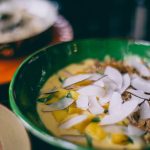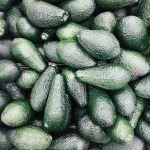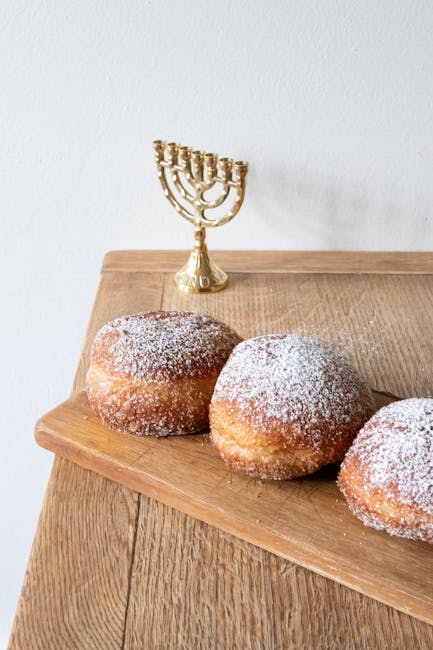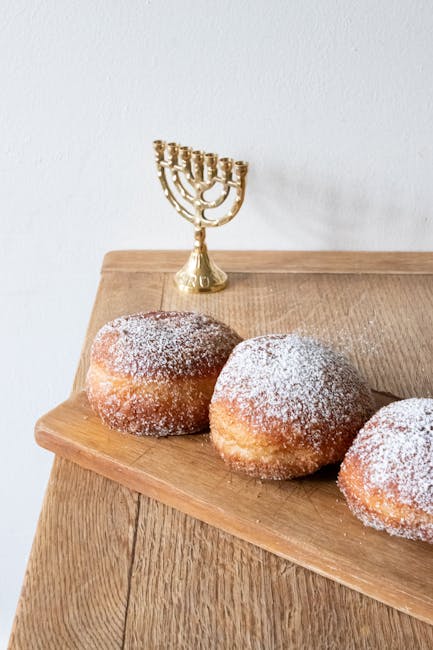Classic British fish and chips: a culinary institution, a national treasure, and a testament to the enduring power of simple, delicious food. Its origins are surprisingly humble, tracing back to the mid-19th century, emerging from the burgeoning working-class populations of the industrial north of England, particularly in areas like Leeds and Manchester. The earliest recorded fish and chip shop opened around 1860, capitalizing on the readily available ingredients: cod and potatoes, both relatively inexpensive and filling. While the exact inventor remains shrouded in mystery, the dish quickly gained popularity, fuelled by its affordability and hearty nature.
The popularity of fish and chips soared throughout the late 19th and early 20th centuries, propelled by factors beyond mere convenience. The introduction of steam trawlers in the 1880s revolutionized fishing, bringing larger quantities of fish to shore at lower costs. This, combined with the increasing availability of potatoes, meant that fish and chips became a truly accessible meal for a wide swathe of the British population. The rise of the chippy, the traditional fish and chip shop, became a staple of British high streets, often serving as a vibrant social hub for local communities.
World War I and II further cemented the dish’s place in British culture. Fish and chips became a vital source of sustenance during wartime rationing, providing a relatively cheap and filling meal for families facing food shortages. The government even prioritized the distribution of fish and potatoes to ensure their availability. This period solidified the dish’s association with British resilience and national identity. Today, the UK consumes an estimated 382 million portions of fish and chips annually, with an average of 11 million being served up daily, demonstrating its enduring appeal.
Beyond the simple pleasure of the food itself, fish and chips represent a significant slice of British social history. From its humble beginnings as working-class fare to its status as a national icon, the dish has witnessed and shaped cultural shifts. The quintessential image of fish and chips, wrapped in newspaper and enjoyed by the seaside, epitomizes a particular vision of British leisure and tradition. The dish’s enduring popularity, despite changing culinary trends, speaks to its unique ability to satisfy both a basic need for sustenance and a deeper longing for familiarity and comfort.
Ingredients and Measurements: Classic British Fish and Chips
This recipe yields approximately 4 servings of delicious fish and chips. The quantities can be easily adjusted to cater for more or fewer people. Remember that accurate measurements are crucial for achieving the perfect crispy batter and fluffy chips.
For the Fish (use firm white fish like Cod or Haddock):
- 4 x 150g (5 oz) fillets of Cod or Haddock, skin on or off – your preference. Ensure the fish is very fresh; the quality of the fish directly impacts the final taste. Look for fillets that are firm to the touch, with a bright, slightly translucent appearance. Avoid any with a strong fishy smell.
- 1 tbsp plain flour, for dusting (optional, helps the batter adhere better)
- Salt and freshly ground black pepper, to taste
For the Batter:
- 200g (7 oz) plain flour – Using plain flour is essential for a crisp batter. Self-raising flour will result in a heavier, less crisp result.
- 1 tsp baking powder – This helps create a lighter batter.
- 1/2 tsp salt – Balances the flavours.
- 300ml (10 fl oz) ice-cold lager or sparkling water – Using ice-cold liquid is key to a crisp batter. The cold temperature prevents the gluten from developing too much, resulting in a lighter, crispier texture. Do not substitute with warm or room temperature liquid.
- 1 large egg, lightly beaten – The egg binds the ingredients together.
- Vegetable oil, for deep frying – Approximately 1.5 litres (2.5 pints) for a deep fryer. Use a high smoke point oil, such as vegetable or sunflower oil. Avoid olive oil as it has a lower smoke point and will impart a strong flavour.
For the Chips:
- 1kg (2.2 lbs) of Maris Piper or King Edward potatoes – These potato varieties are ideal for chips due to their high starch content, which contributes to fluffiness inside and crispiness outside. Avoid waxy potatoes.
- Vegetable oil, for deep frying – Approximately 1.5 litres (2.5 pints) for a deep fryer. Use the same oil as for the fish to maintain consistency.
- Salt, to taste – Season the chips generously with salt after frying for optimal flavour. Sea salt flakes are a great option.
For Serving (Optional):
- Malt vinegar
- Salt
- Curry sauce
- Mushy peas
Important Note: Always ensure the oil is at the correct temperature before adding the fish or chips. The ideal temperature for frying fish is around 180°C (350°F), and for chips, a slightly higher temperature of 190°C (375°F) is generally recommended. Use a thermometer to check the temperature accurately.
Safety Note: Deep frying involves hot oil and can be dangerous. Always take necessary precautions, such as using appropriate safety equipment and never leaving the fryer unattended.
Preparation of the Fish (including portioning and battering)
The quality of your fish and chips hinges significantly on the preparation of the fish itself. Using fresh, high-quality cod or haddock is paramount for optimal flavour and texture. Begin by thoroughly inspecting your fish fillets. Discard any showing signs of discoloration, damage, or unpleasant odour. Fresh fish should smell subtly of the sea, not fishy or ammonia-like.
Portioning the fish is crucial for even cooking. Aim for consistent size and thickness to ensure all pieces cook through simultaneously and achieve a crispy, golden batter. For a standard serving, aim for fillets approximately 150-200g in weight. Using a sharp filleting knife, carefully cut the fillets into portions of this size. Avoid overly thin portions as they will dry out during cooking, and overly thick portions may remain undercooked in the centre.
Before battering, it’s essential to dry the fish thoroughly. Excess moisture will result in a soggy batter. Pat the fish fillets gently but firmly with absorbent paper towels. Remove as much surface moisture as possible. This step is critical for achieving a light and crispy batter.
Now, let’s prepare the batter. A classic fish and chips batter typically consists of plain flour, ice-cold water, and a pinch of salt. For approximately 1kg of fish portions, you’ll need around 400g of plain flour and 300ml of ice-cold water. The use of ice-cold water is key; it helps to create a lighter, crispier batter. Gradually whisk the water into the flour, ensuring no lumps form. Add a pinch of salt to enhance the flavour. The batter should have a smooth, pourable consistency, similar to single cream. Avoid over-mixing, as this develops gluten and can lead to a tough batter.
Once the batter is prepared, gently dip each fish portion into the batter, ensuring it’s fully coated. Allow any excess batter to drip off before carefully placing the fish into the hot oil. Avoid overcrowding the fryer; this will lower the oil temperature and result in greasy, soggy fish. Work in batches to maintain the oil temperature and ensure even cooking. Using tongs to carefully place the fish into the hot oil will prevent splashing.
Before frying, ensure that your oil is at the correct temperature. Use a thermometer to maintain a temperature between 170-180°C (338-356°F). This temperature is crucial for achieving a perfectly cooked fish with a light and crispy batter. Too low a temperature will result in greasy fish, while too high a temperature will burn the batter before the fish is cooked through.
Preparation of the Chips (including cutting and soaking)
The quality of your chips is paramount to a truly great fish and chip experience. This section details the crucial steps in preparing perfect chips, from selecting the right potatoes to the final soak.
Potato Selection: Begin with the right potatoes. Maris Piper and King Edward are classic choices for their fluffy interior and ability to crisp up beautifully. Avoid floury potatoes like Russets, which tend to become mushy when fried. Aim for potatoes that are firm to the touch and free from blemishes. Approximately 2kg of potatoes will yield enough chips for 4 servings.
Washing and Peeling: Thoroughly wash the potatoes under cold running water to remove any soil or debris. Peel them using a vegetable peeler, ensuring you remove all the skin. Avoid using a potato peeler that removes too much potato flesh, as this will reduce your yield and affect the final texture.
Cutting the Chips: Consistency is key for even cooking. Use a mandoline slicer or a sharp knife to cut the potatoes into chips of uniform size and thickness. Aim for chips that are approximately 1cm thick and 10-12cm long. This ensures they cook evenly and achieve a lovely crisp exterior without a soggy interior. If using a knife, practice cutting a few test chips to get a feel for the size and consistency before tackling the entire batch.
Soaking the Chips (The Crucial Step): This step is often overlooked, but it’s essential for removing excess starch and preventing the chips from becoming soggy. Place the cut chips in a large bowl and cover them completely with cold water. Add a generous tablespoon of salt to the water – this helps draw out more starch and adds flavour. Let the chips soak for at least 30 minutes, and up to 2 hours, depending on time constraints and how starchy your potatoes are. The longer they soak, the crispier they will be. Change the water once or twice during the soaking period to ensure maximum starch removal.
Rinsing and Drying: After soaking, thoroughly drain the chips in a colander. Rinse them under cold running water to remove any remaining starch. Then, it’s crucial to dry them as thoroughly as possible. Pat them dry with clean kitchen towels or paper towels. Excess moisture will cause the chips to steam rather than crisp during frying.
Pre-preparation Tip: You can prepare the chips up to this point ahead of time. Store them in a single layer on a clean kitchen towel in the refrigerator for up to 24 hours before frying. This allows for better moisture removal and improved texture.
Important Note: The success of your chips hinges on the attention to detail in these preparation steps. Taking the time to properly prepare your potatoes will result in superior chips that are crispy on the outside and fluffy on the inside – the perfect accompaniment to your delicious fish.
Frying the Chips (including double-frying technique)
Achieving perfectly crisp, fluffy chips is the cornerstone of a great fish and chip supper. This requires careful attention to potato selection, preparation, and, most importantly, the frying process. We’ll explore the superior double-frying method, ensuring your chips are golden brown on the outside and light and fluffy within.
Potato Selection: Use potatoes specifically designed for chipping, such as Maris Piper or King Edward. These varieties have the right starch-to-moisture ratio for optimal crispness and texture. Avoid waxy potatoes, as they tend to become gummy when fried.
Preparation: Begin by peeling the potatoes (approximately 2kg) and cutting them into even-sized chips, roughly 1cm by 1cm. Consistency in size is crucial for even cooking. Soaking the chips in cold water for at least 30 minutes (and up to 2 hours) is essential. This leaches out excess starch, preventing them from becoming sticky and ensuring a crispier result. After soaking, drain the chips thoroughly.
First Fry (Blanching): Fill a large, heavy-bottomed pot with approximately 3 litres of vegetable oil (high smoke point oil like rapeseed or sunflower is recommended). Heat the oil to 130-140°C (265-285°F). Use a thermometer to monitor the temperature accurately. This is crucial; too low, and the chips will absorb too much oil; too high, and they’ll burn on the outside before cooking through. Add the chips in batches, ensuring not to overcrowd the pot. Fry for approximately 4-5 minutes, until they are slightly softened but not browned. Remove the chips with a slotted spoon and place them on a wire rack to drain excess oil.
Second Fry (Crisping): Once the first batch is complete, increase the oil temperature to 180-190°C (355-375°F). This higher temperature will crisp the chips beautifully. Again, add the chips in batches, avoiding overcrowding. Fry for 3-4 minutes, or until they are golden brown and perfectly crisp. Avoid over-crowding the pot during both fries, as this will lower the oil temperature and result in greasy chips.
Draining and Serving: Once cooked, remove the chips from the oil and place them immediately on a wire rack lined with absorbent paper to drain any excess oil. Season generously with salt immediately after frying, while the chips are still hot, to enhance the flavour and ensure the salt adheres properly. Serve immediately for the best results. If you need to keep them warm for a short period, place them in a warm oven (around 80°C/175°F) but avoid keeping them warm for too long as they will lose their crispness.
Professional Recommendations: Always use a deep-fat fryer with a thermostat for precise temperature control. Never leave the oil unattended while frying. Be mindful of the oil’s smoke point and avoid overheating. Regularly filter your oil to extend its lifespan and prevent build-up of food particles. Using fresh oil for each batch is ideal, but if reusing, ensure it’s filtered and the temperature is correct.
By following these steps, you can confidently produce consistently delicious, crispy chips that will complement your fish and chips perfectly. Remember, practice makes perfect! Don’t be discouraged if your first attempt isn’t flawless; with a little experience, you’ll be producing chip shop-quality chips in no time.
Frying the Fish (including batter consistency and oil temperature)
The success of your fish and chips hinges significantly on the frying process. Getting the batter right and maintaining the correct oil temperature are crucial for achieving that perfect, crispy exterior and flaky, moist interior. This section will guide you through the process, ensuring you produce fish and chips worthy of a seaside chippy.
Batter Consistency: The ideal batter should be smooth, lump-free, and have the consistency of single cream. Too thick, and it will be heavy and greasy; too thin, and it will be soggy and fall off the fish. To achieve this, gradually whisk 150g of plain flour into 250ml of ice-cold sparkling water (the carbonation helps create a lighter batter). Avoid using tap water as the chlorine can affect the texture. Add a pinch of salt and a teaspoon of baking powder for extra lift. Whisk until thoroughly combined, but don’t overmix – a few lumps are acceptable, but avoid a heavily overworked batter.
Preparing the Fish: Before battering, ensure your fish fillets (ideally cod, haddock, or plaice) are patted thoroughly dry with paper towels. Excess moisture will cause the batter to steam rather than crisp up. Cut the fillets into portions of roughly 100-150g, depending on their size and thickness. This ensures even cooking.
Oil Temperature: The oil temperature is paramount. Too low, and the fish will absorb excessive oil and be greasy; too high, and the batter will burn before the fish is cooked through. The optimal temperature for frying fish is between 180-190°C (356-374°F). Use a deep-fat fryer or a large, heavy-bottomed pan filled with at least 5cm (2 inches) of vegetable oil (avoid using olive oil as it has a low smoking point). Use a thermometer to monitor the temperature accurately. Never leave the oil unattended while frying.
The Frying Process: Once the oil reaches the correct temperature, gently dip each fish fillet into the batter, ensuring it’s fully coated. Allow any excess batter to drip off before carefully lowering the fish into the hot oil. Avoid overcrowding the pan; fry in batches to maintain the oil temperature. Fry for approximately 3-4 minutes per side, or until the batter is golden brown and crisp. You should see the batter bubbling and lifting slightly from the oil. Use tongs to gently turn the fish, avoiding splashing hot oil.
Draining and Serving: Once cooked, remove the fish from the oil using a slotted spoon and place it on a wire rack lined with kitchen paper to drain any excess oil. Serve immediately with your freshly cooked chips. The quicker you serve the fish after frying, the crispier it will remain. If you need to keep it warm for a short period, place it on a baking tray in a low oven (around 80°C or 175°F).
Cleaning Up: Allow the oil to cool completely before disposing of it properly. Never pour hot oil down the sink as this can cause blockages. Follow your local council’s guidelines for oil disposal.
Draining and Salting: Preparing Your Fish for Frying
Proper draining and salting of your fish are crucial steps in achieving perfectly crisp, flavourful fish and chips. Neglecting this stage can lead to soggy batter and bland fish. This section will guide you through the process, ensuring your fish is optimally prepared for the fryer.
Begin by thoroughly draining the fish. After you’ve prepared your fish fillets (cod, haddock, or your preferred variety), it’s essential to remove excess moisture. This is vital because moisture will steam the batter, resulting in a soft, unpleasant texture instead of the desired crispness. Simply patting the fish dry with paper towels isn’t sufficient for optimal results. Instead, after initial patting, consider placing the fillets on a wire rack for at least 15-20 minutes, allowing gravity and air circulation to further remove surface moisture. Avoid overcrowding the rack to ensure even drying.
The quantity of fish you process at once will depend on the size of your wire rack and fryer. For a typical home fryer, working with 4-6 medium-sized cod fillets at a time is manageable. If you’re processing larger batches, consider using multiple racks or working in stages to ensure thorough draining.
Salting is equally important. It not only enhances the flavour of the fish but also helps to draw out even more moisture, contributing to a crispier batter. Use a generous amount of fine sea salt. A good rule of thumb is approximately 1-2 teaspoons of salt per pound of fish. However, this can be adjusted to your personal preference. Don’t be afraid to season generously; the salt will be balanced by the batter and the malt vinegar often served alongside.
The method of salting is crucial. Simply sprinkling the salt on top won’t achieve even seasoning. Instead, gently rub the salt into both sides of each fillet, ensuring that the seasoning penetrates the surface. This helps to season the fish evenly and draw out any remaining surface moisture. This process should take around 2-3 minutes per batch. Avoid over-salting; however, slightly under-salting is preferable to over-salting, as you can always add more salt to your chips.
Timing is key. After salting, allow the fish to rest for another 5-10 minutes. This allows the salt to work its magic and draw out any remaining moisture. This short resting period is often overlooked, but it significantly contributes to the final result. Don’t skip this step; it is a crucial part of achieving perfectly crisp fish and chips.
By following these detailed steps for draining and salting, you’ll be well on your way to creating authentic, restaurant-quality British fish and chips. Remember, attention to detail in this stage is paramount to the overall success of your dish.
Recommendations for Classic British Fish and Chips
For the best enjoyment of your Classic British Fish and Chips, we recommend consuming them immediately after preparation. The crispy batter and flaky fish are at their optimal texture and flavour when freshly cooked. Do not let your fish and chips sit for extended periods, as the batter will become soggy and the fish will lose its crispness.
Serving Suggestions: Traditionally, fish and chips are served in newspaper-lined paper cones, adding to the authentic experience. However, a sturdy cardboard container works equally well. For a more formal presentation, consider serving the fish and chips on individual plates, garnished with a lemon wedge. A generous portion of malt vinegar is essential, allowing your customers to personalize their experience. Many also enjoy a dollop of tartar sauce or mushy peas on the side.
Complementary Dishes: To enhance your fish and chips experience, consider offering a selection of complementary dishes. Mushy peas are a classic accompaniment, providing a creamy counterpoint to the crispy fish and chips. Curry sauce is another popular addition, offering a spicy and savoury twist. A simple side salad with a light vinaigrette can provide a refreshing element, balancing the richness of the fried food. Consider offering beverages like traditional British beer or a crisp, refreshing lemonade.
Storage Conditions: Leftover fish and chips should be stored in the refrigerator in an airtight container. However, we strongly advise against reheating fish and chips, as the texture and flavour will be significantly compromised. The batter will likely become soggy, and the fish may become dry. If you absolutely must reheat, consider lightly frying or baking the fish only. Do not reheat the chips.
Nutritional Information (per serving, approximate): The nutritional content of fish and chips can vary significantly depending on the type of fish used, the batter recipe, and the portion size. However, a typical serving (approximately 150g of fish and 150g of chips) may contain roughly 700-900 calories. This includes a significant amount of fat, primarily from the frying process. The nutritional profile will also include carbohydrates from the potatoes, protein from the fish, and varying amounts of vitamins and minerals depending on the fish used. For a more detailed nutritional breakdown, please consult a nutritionist or refer to specific product labels.
Important Note: The information provided above is for guidance only. Always check the specific nutritional information provided by your supplier for the most accurate data. Food safety and hygiene practices should always be followed to ensure the quality and safety of your fish and chips.





